Sunday morning (Sunday March 10) we drove home from a wonderful Amboy Crater observing night. As we drove up our street, we have a good view of Mt. Wilson and the telescopes, as you can see here. My Comet PanSTARRS sketches (and astrophotos tomorrow) from near the Mt. Wilson Observatory (but on the other side of the mountain) are below.
I drove past the telescopes on Angeles Crest Highway 2 to catch a glimpse of the comet. From home, Mt. Wilson is about 7 miles away as the crow flies. Not being a crow, I drove 13 miles to work, then 3 miles to Angeles Crest Freeway, then up 20+ miles and 5,200 feet in elevation on the mountain highway to get this view — that’s the historic 100-inch Mt Wilson Hooker telescope dome and the two solar telescopes on the ridge.
We arrived at our viewing location, 23.5 miles up the hill, milepost 48.34, 34d 18′ 26″ N Latitude 118d 00’54″ W Longitude, altitude 5266 ft before sunset – the Chileo turnout just before the Caltrans yard on Angeles Crest Highway. I am indebted to my friend Steve Edberg, who has observed on these pullouts since the 1970′s. We passed many other spots which he has observed from, but which didn’t have the required “dip” in altitude, which provided a view of the western horizon depressed to a further 1 degree.
We had to wait over a half hour after sunset for the twilight sky to darken. Civil twilight occurred at 7:22 p.m. PDT, when the sun dipped 6 degrees below the horizon. We scanned the sky, not only looking for the comet, but for the moon, too. But the new moon was only about 6 hours old (new at 12:52 p.m. Pacific Daylight Time March 11, and impossible to see). Thanks to Steve Edberg for explaining “horizon depression”:”Due to our elevation, looking down from 5,266 feet, the terrain horizon in the distance was lower than horizontal, so we could look “down” far enough that we gained one degree more of viewing potential. This dip of the horizon doesn’t include the terrestrial refraction at the apparent horizon, which often “raises” astronomical objects (meaning they set later than airless geometry predicts)”.
Here is what we did see, beginning at 7:34 p.m.
Here is my first sketch. Showing what Comet PanSTARRS looks like through 7 x 50 binoculars with a 7 degree field of view. We were unable to see it naked-eye. I couldn’t get both the horizon and the comet in the same binocular field of view.
Here is the final view through bigger binoculars just before the comet was lost in the haze. Celestron 9 x 63 binos, with a 5 degree field of view. It was amazing to watch the speedy comet move!
NASA’s Prime Time for PANSTARRS Toolkit with charts, and observations and more.
What’s Up PanSTARR Edition Podcast
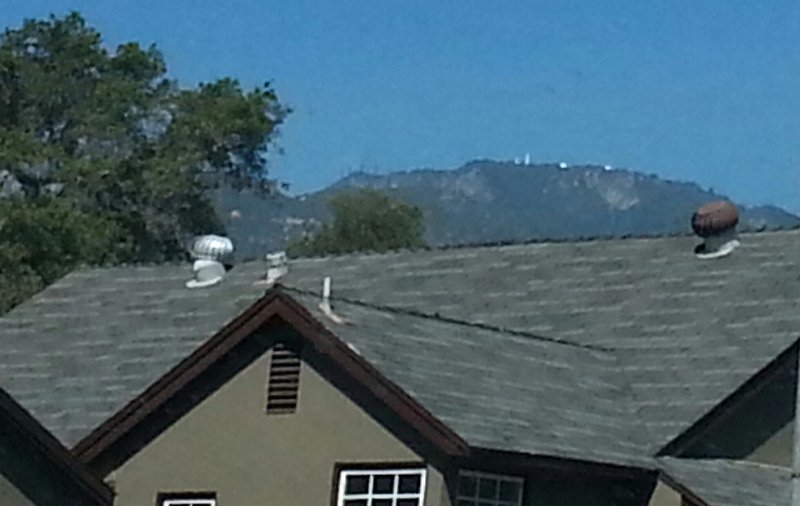
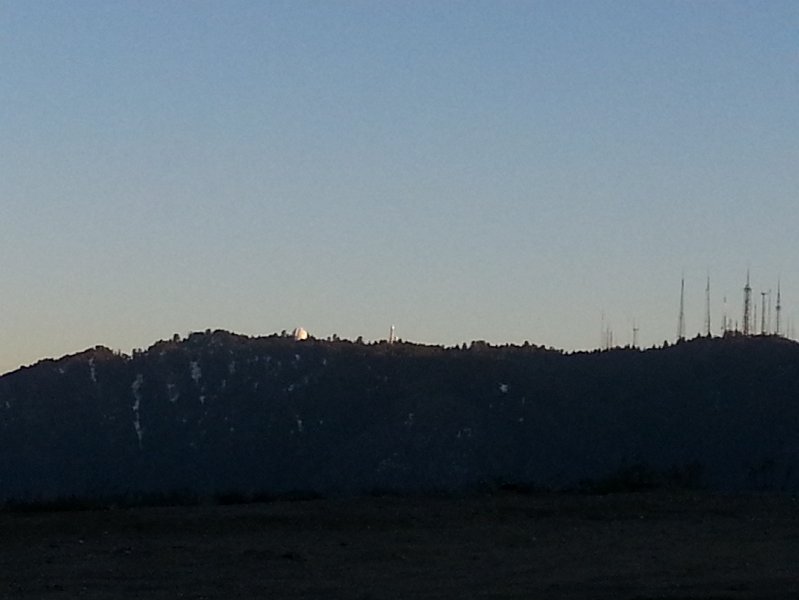
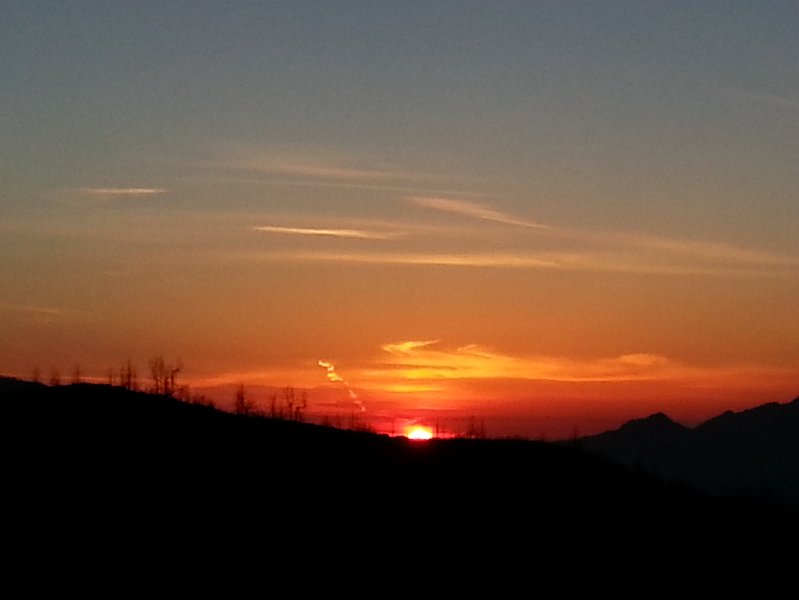
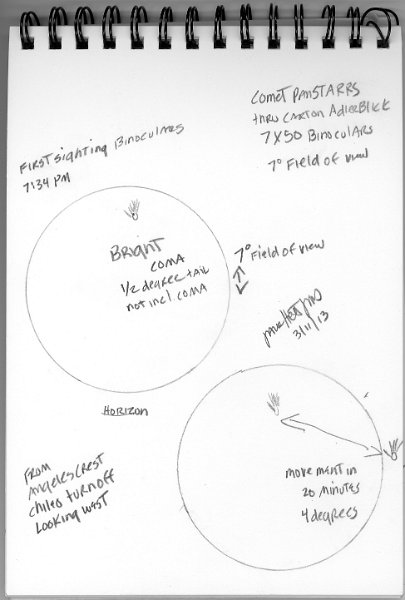
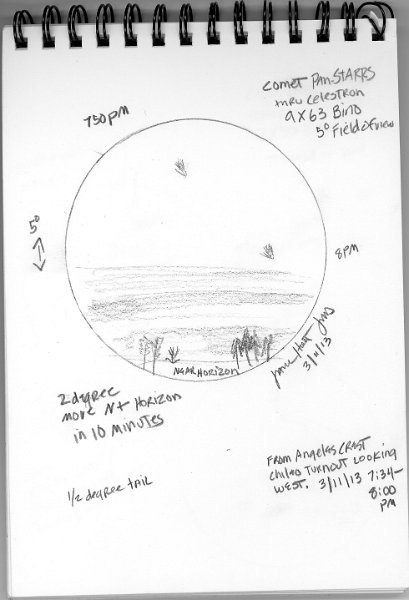
Jane, I had given up hope of seeing it, but your renderings make me want to try tomorrow night. Don
Saw it naked eye tonight, moon above tomorrow!!
I tried, unsucessfully, to see it last night with my three boys (ages 6, 9 and 10 1/2). We still had fun messing around with dry ice and talking about what comets are. We’ll try to see it again tonight. Thanks for your drawings and description, Jane. It’s very helpful to me as I try to find it.
I’ll add a few images to the bottom of this same blog. Moon and comet last night (Tues the 12th) – and I was able to see the comet with my unaided eye 5+ defrees to the left of the moon. Followed the “horn” aka the tips of the Cheshire cat moon smile in a straight line, and there was the comet!!
[...] with difficulty just after sunset, low in the western sky. I’ve seen it myself through binoculars and with my own eyes! It is still be visible without a telescope, binoculars will help pull it out [...]